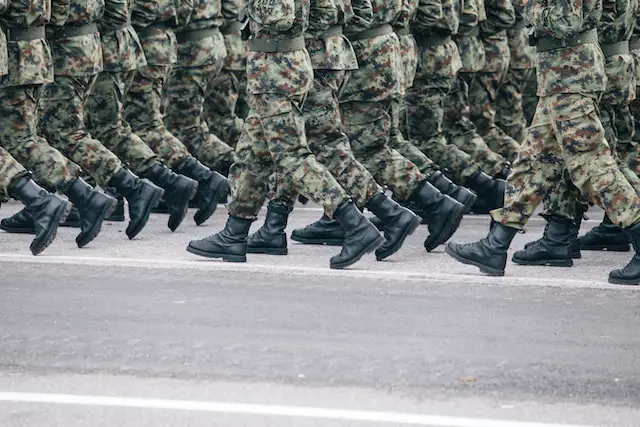NATO, or the North Atlantic Treaty Organization, is an intergovernmental military alliance formed in 1949 to ensure the collective defense of its member states against potential security threats. NATO’s military strength is determined by various key factors, including its military spending, the size of its armed forces, and its military capabilities.

One of the most significant indicators of NATO’s military strength is its military spending. In 2020, NATO member countries collectively spent over $1.03 trillion on defense, accounting for over 50% of global military spending. The United States, the largest military spender in the world, contributed over 65% of NATO’s total defense spending, with the rest of the member countries making up the remainder.
While NATO’s military spending has remained relatively stable in recent years, it is important to note that there is significant variation among member countries. Some countries, such as the United States, spend a significant portion of their GDP on defense, while others spend much less. This can lead to disparities in military capabilities among member countries, with some countries having significantly stronger militaries than others.
The size of a country’s armed forces is another key factor in determining its military strength. NATO member countries collectively have over 3.6 million active-duty military personnel, making it one of the largest military forces in the world. The United States has the largest military by far, with over 1.3 million active-duty personnel, followed by Turkey and France.
While the size of a country’s armed forces is important, it is equally important to consider the quality and capabilities of those forces. For example, a smaller but better-equipped military force may be more effective than a larger but less-well-equipped force.
The military capabilities of NATO’s member countries are another crucial factor in assessing the strength of the alliance. NATO has a wide range of military capabilities, including air, sea, and land forces, as well as intelligence, surveillance, and reconnaissance capabilities.
NATO has a significant advantage over most potential adversaries in terms of air power. The alliance has a large number of fighter aircraft, bombers, and support aircraft, including advanced fifth-generation fighters such as the F-35. NATO also has a significant advantage in terms of air defense, with advanced missile defense systems such as the Patriot and Aegis systems.
NATO’s naval forces are also highly capable, with a significant number of aircraft carriers, submarines, and surface combatants. NATO’s naval forces are particularly strong in the Mediterranean and the North Atlantic, where they can help to protect vital sea lanes and ensure the free flow of goods and services.
In terms of ground forces, NATO has a significant advantage in terms of technology and firepower. NATO’s armored vehicles, artillery, and small arms are among the most advanced in the world, and the alliance has significant experience in conducting combined arms operations.
In conclusion, NATO’s military strength is derived from a combination of military spending, the size of its armed forces, and its military capabilities. The alliance’s collective military spending accounts for over 50% of global military spending, and its member countries have over 3.6 million active-duty military personnel. NATO’s military capabilities are diverse, with advanced air, sea, and land forces, as well as intelligence, surveillance, and reconnaissance capabilities. While disparities in military capabilities exist among member countries, NATO’s collective capabilities are significant, and the alliance remains a potent force for ensuring global security and stability.
